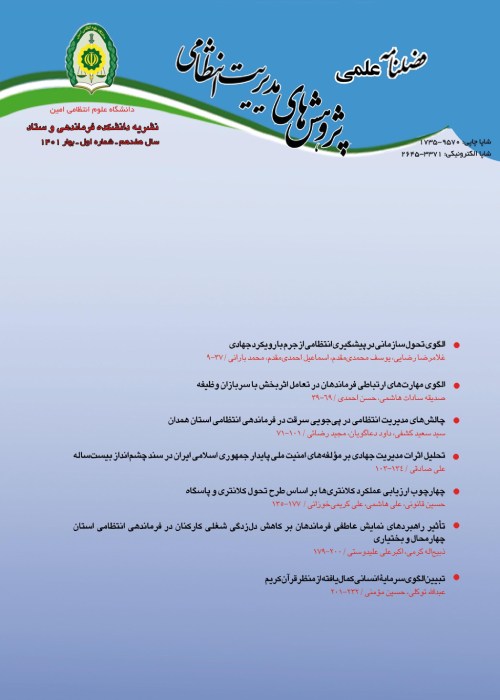A Model of Multi-institutional Participation in Crime Detection Process
The problem that today's society is suffering from is the way related institutions and organizations intervene in the crime detection process and get the participation of other governmental and non-governmental organizations and foundations by the judicial system and law enforcement command to manage crimes. The main goal of this research is to design a model of multi-institutional participation in the crime detection process.
This research was conducted with a mixed approach (qualitative-quantitative). The participants in the qualitative part included experts related to the subject, and the statistical community in the quantitative part was selected from experts in related categories in accordance with the crime detection mission. Sampling in the qualitative part is purposeful and in the quantitative stage it is stratified random. The data was collected in the qualitative phase through semi-structured interviews and in the quantitative part using a researcher-made questionnaire (based on the findings of the qualitative phase).
The identification and statistics of the dimensions (five dimensions), components (31 components) and indicators of the multi-institutional partnership model (147 indicators) indicate that there is a significant relationship between all dimensions with the multi-institutional partnership model and, in total, the final multi-institutional model in the process of mass identification was reliably tested.
In the structural dimension, six components include "command and management, control and supervision, organizational structure, planning, functions and organization"; In the environmental dimension, there are seven components including "neighboring systems, law, social obligation, public interest, commitment to society, interaction and cooperation and type of participation"; In the system dimension, five components include "human resource management, reactions, coordination, information and motivation promotion"; In the processes dimension, there are five components including "problems and obstacles, requirements, regulations, complementary programs and professional approach"; In the technological dimension, eight components including "electronic participation, intelligence, media interactions, technology, equipment, training and crime detection knowledge" have the greatest impact in the crime detection process, which indicates the design and presentation of a desirable model of multi-institutional partnership and a meaningful relationship between dimensions. has been identified.
- حق عضویت دریافتی صرف حمایت از نشریات عضو و نگهداری، تکمیل و توسعه مگیران میشود.
- پرداخت حق اشتراک و دانلود مقالات اجازه بازنشر آن در سایر رسانههای چاپی و دیجیتال را به کاربر نمیدهد.


